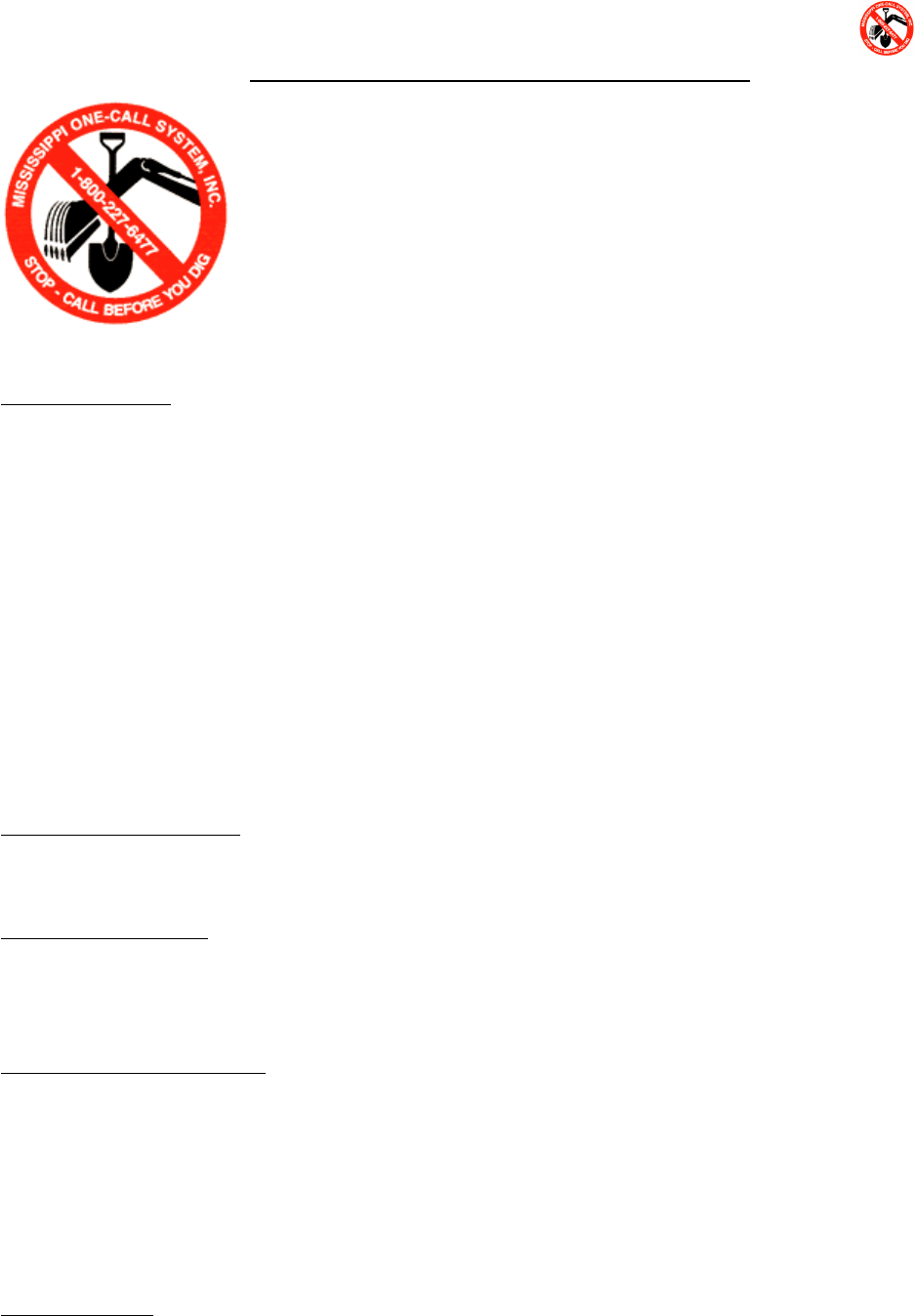
Appendix C
Mississippi One-Call and 811 Color Coding
Utilities Safety – Mississippi One-Call
The Mississippi One-Call service provides information to contractors on the locations of
underground utilities. Utility safety is critical to protect life and prevent property
damages! The following pages provide information on the Mississippi One-Call
program and steps to take before you dig. Call 1-800-227-6477.
811 Color Coding
The Mississippi One-Call information also provides the 811 Color Coding
marking/flagging standards for electric power lines, gas, oil, petroleum products,
communication lines or cables, water lines, storm and sanitary sewers, temporary survey
markings and the proposed excavation locations.
C-1

Chapter 4 - BEST MANAGEMENT PRACTICE STANDARDS
C-2
Utilities Safety - Mississippi One-Call System, Inc.
What Does It Do?
The excavator should call the MOCC two working days prior to beginning excavation (to satisfy
Mississippi law):
1. MOCC will determine from the excavator the location of the excavation.
2. MOCC will notify all MOCS, Inc. members with underground facilities in the quarter section(s) where
the excavation is to take place.
3. Members will either mark their facilities in the area of excavation or inform the excavator they have no
facilities in the area of excavation.
All messages to and from the MOCC are recorded and maintained for a minimum of 36 months. This is
done for the protection of both excavators and operators.
How Much Does It Cost?
MOCC is free to excavators. Underground facility operators pay a membership fee which supports the
computerized information center.
Proposed Excavations
Use white marks to show the location, route or boundary of proposed excavation. Surface marks used on
roadways should not exceed 1.5" by 18" (40mm by 450mm). The facility color and facility owner identity
may be added to white flags or stakes.
Use of Temporary markings
Use color-coded surface marks (i.e. paint or chalk) to indicate the location and route of buried lines. To
increase visibility, color-coded vertical markers (i.e. stakes or flags) may supplement surface marks.
Marks and markers may indicate the name, initials or logo of the company that owns or operates the line,
and width of the facility if greater than 2" (50mm). Multiple lines in common trench may be marked in
tandem. If the surface over the buried line is to be removed, supplementary offset markings are used.
Offset markings are on a uniform alignment and clearly indicate the actual facility is a specific distance
away.
Tolerance zones
Any excavation within a tolerance zone is performed with non-powered hand tools or non-invasive
methods until the marked facility is exposed. The width of the tolerance zone is specified in law. The
tolerance zone includes the width of the facility plus at least 18" (450mm) measured horizontally from
each side of the facility.

Chapter 4 - BEST MANAGEMENT PRACTICE STANDARDS
C-3
Markings/Flagging
RED: Electric power lines and conduits.
YELLOW: Gas, oil, petroleum products and all other hazardous liquid or gaseous materials.
ORANGE: Communication lines or cables, including telephone, telegraph, cable TV, and traffic control lines.
BLUE: Water lines.
GREEN: Storm and sanitary sewers.
PINK: Temporary survey markings.
WHITE (Optional): Proposed excavation area (by excavator).
